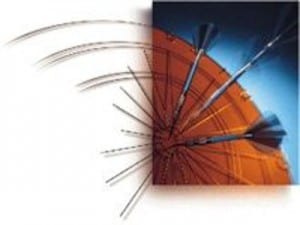SAP Conference Room Proof of Concept Pilots
Proof of Concepts with frequent early prototyping drive project costs down. Consider the old saying: “an ounce of prevention can avoid a pound of cure.” Proof of concept pilots during the project are a rarely mentioned SAP critical success factor.
Early in my SAP career, the disruption these prototype sessions, conference room pilots, etc. would cause used to frustrate me. My thought was, “I have a job to do and don’t have time for this.” No one ever stopped to help me understand why these pilots and prototypes are important.
Before I get into the substance of this, let me first be very clear about what I am referring to. A prototype, pilot, or demonstration is actual system functionality set up in the application to demonstrate transactional business processing. I have heard of some system integrators who call PowerPoint process flows these types of “pilots,” and that is completely ridiculous. They simply regurgitate SAP Blueprint process flows and are not a prototype, pilot, or system demonstration at all.
Stop the SAP Consulting Merry Go Round – Real Life Experiences
Nothing is more frustrating than trying to work through a complex issue and going around and around with meetings, discussions, process flows, etc.
At one client, we had a complex third-party process that involved one foreign company code doing sales deliveries for a domestic company code. However, the domestic company would bill the customer and collect the cash, the foreign company would do inter-company billing, etc. The system involved not only third-party processing, but also foreign trade, batch, and serial number tracking.
After getting a large and expensive group of consultants together with key client resources, we hammered the first pass out. Then, we did it again a few days later, and then again a few days later. After about four or five weeks of this madness, the consultants turned out to be the problem more than the client. Several of the consultants essentially said that our goal couldn’t be reached.
To stop the complete waste of time, I left the last meeting and spent three days setting up a prototype the consultants said couldn’t be done. Now, in their defense, the prototype is complicated, and it does involve setup in SD, MM, PP, FI, and EDI. Very few consultants have ever done this type of integrated setup. I scheduled a demonstration with all of the key stakeholders and project leadership to put this issue to rest. The SAP standard functionality covered approximately 90% of the overall requirement, and all we needed to discuss were small tweaks or changes rather than trying to over-engineer a customized process mess.
Reduce SAP Implementation Cost, Improve SAP Quality, and Manage SAP Scope More Effectively
Using Conference Room Pilots, or Functionality Playbacks, is effective for difficult-to-understand processes system demonstrations. This technique can significantly reduce meeting times and increase customer satisfaction.
Stanford professors Carleton and Cokayne spent seven years studying the user of physical prototypes in “foresight engineering” which is the ongoing development of products or services that are three or more product cycles in the future. They studied the use of prototypes for “capturing and communicating a team’s opportunities inside the organization, connecting the company’s vision and strategy with… day-to-day [engineering design work], and helping teams to connect vision to research to engineering design.” (Carleton, T., and Cockayne, W., (2009) The Power of Prototypes in Foresight Engineering. International Conference on Engineering Design, ICED’09/493, Stanford University, August 24-27 2009, page 1.)
The use of prototypes has been found to “make ideas tangible, iterate quickly at a low cost, and develop a shared language” (ibid.). These demonstrations are part of the change management process and can bring the broader organization along in the process. The second half of the post on ERP, SAP, or IT Project Management and Prototyping for Success provides more detail for the following items:
- System demonstrations focus on delivering what is important while allowing for early adjustments.
- Complex or difficult functionality demonstrations reduce the overall amount of meeting time.
- System demonstrations identify gaps and problems earlier, reducing the number of testing defects and rework time.
- Early demonstrations ensure scope is properly accounted for and last-minute process surprises are reduced.
- Some performance problems are exposed.
- Possible schedule and work completion issues are exposed while they are still manageable.
By doing many prototypes early in a project, you also quickly separate the good IT resources from those who are not so talented– or even those who are complete fakes.
Conclusion on Using SAP Prototypes, Functionality Demonstrations, or Conference Room Pilots for Project Success
Just as the real world example I noted above shows, by using prototypes or demonstrations to understand where the real business requirement gaps are, you can avoid a major investment in custom development work. This way, you reduce ongoing maintenance headaches.
As for dealing with scheduling and work completion, I have been on many projects where some of the consultants or team leads would simply lie about their status and completion. By having a clearly defined pilot and playback schedule throughout the project for certain key functionality, you ensure that what is committed is actually delivered. Too many times, the real status does not show up until testing starts, or worse still, items get taken out of scope because of misleading status. By then, it is too late.







Hello Bill, your article is excellent!
Thanks for your post.
Regards from Argentina,
Sid